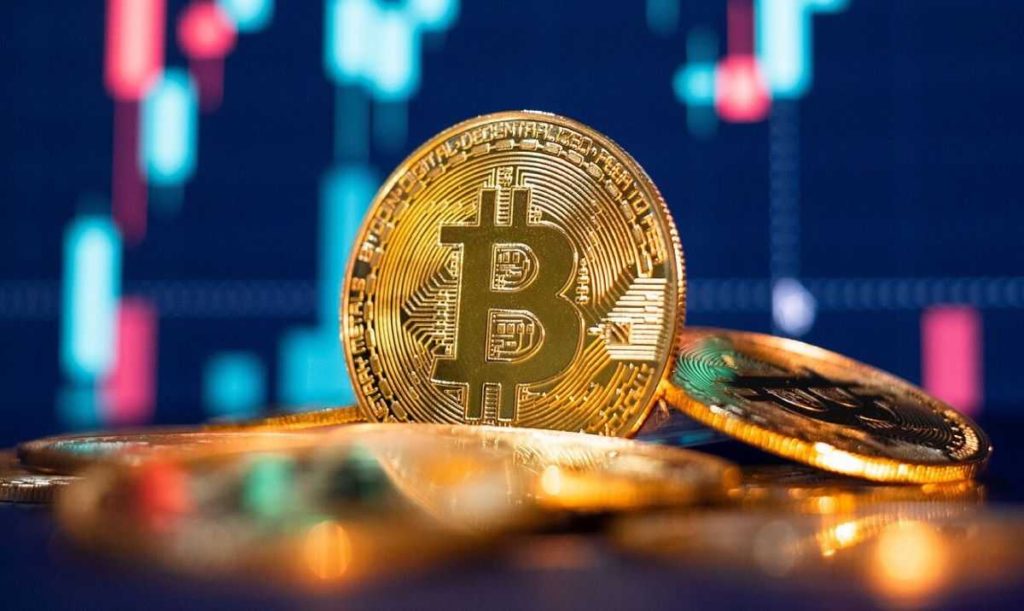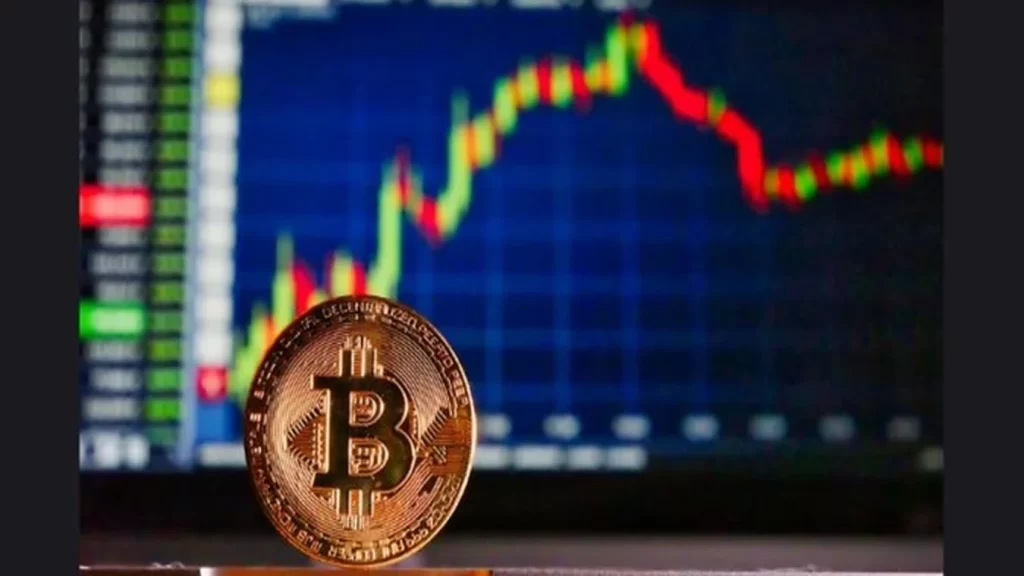The UK government has recently taken a significant step towards strengthening its legal framework against the misuse of cryptocurrencies in criminal activities.
In a statutory instrument issued on February 29, it was announced that from the end of April, UK law enforcement will have the authority to freeze crypto assets tied to criminal acts without the necessity of a prior conviction.
This development is a part of the amendments to the Economic Crime and Corporate Transparency Act 2023, which grants the National Crime Agency expanded powers to confiscate and seize cryptocurrencies linked to illegal activities, bypassing lengthy legal processes.
The documentation further clarifies that this will enable the authorities to directly access cryptocurrencies held in exchanges and by custodian wallet providers.
An additional measure included in the amendment is the authority to eliminate crypto assets if deemed necessary.
Although the method for this was not specified, the common practice involves “burning” the crypto tokens by transferring them to a wallet from which they cannot be retrieved, effectively removing them from circulation.
This new law is scheduled to be enforced starting April 26.
READ MORE: Eight State Attorneys General Challenge SEC’s Authority in Kraken Lawsuit
The legislation, reported by Cointelegraph in September 2022, is designed to enhance the capability of UK authorities in combating crypto-related crimes, including cybercrime, scams, and drug trafficking.
It includes a provision for the recovery of crypto assets linked to criminal activities without the prerequisite of an arrest, addressing the challenge of perpetrators evading conviction by staying abroad.
Despite these advancements, concerns have been raised by a British national, a victim of crypto fraud who lost around $46,000, about the UK’s preparedness in dealing with cryptocurrency crimes, criticizing the agency’s response to his case.
In addition to these measures, the UK government is planning to introduce new regulations on stablecoins and crypto staking within the next six months.
At a Coinbase-hosted crypto event in London on February 19, Economic Secretary to the Treasury Bim Afolami expressed the government’s commitment to finalizing these regulations before the next election, slated for no later than January 28, 2025.
Afolami emphasized the urgency of these regulatory efforts, stating, “We’re very clear that we want to get these things done as soon as possible. And I think over the next six months, those things are doable.”
The Bitcoin bull market officially commenced on March 1, as stated by the pseudonymous quantitative analyst PlanB, renowned for the contentious stock-to-flow (S2F) model for Bitcoin’s price.
The accumulation phase for Bitcoin (BTC) has drawn to a close, along with the easily accessible Bitcoin buying opportunities, as highlighted in a recent post by PlanB, referencing the S2F chart.
“Bull market has started. If history is any guide, we will see ~10 months of face-melting [fear of missing out] FOMO: extreme price pumps combined with multiple -30% drops.”
This forecast from the anonymous analyst emerged just two days following Bitcoin’s surge past $60,000 for the first time in over two years.
Bitcoin observed a slight decline of 0.75% in the 24-hour period ending at 3:00 pm Central European Time, settling at $62,472.
Despite its popularity during the 2021 bull run, the S2F model isn’t infallible.
As per the chart, Bitcoin was projected to surpass the $100,000 mark in early August 2021, when it was hovering around $44,000.
READ MORE: Shido Token Plummets by 94% Following Exploit on Ethereum-Based Staking Contract
Ethereum co-founder Vitalik Buterin has also criticized the S2F model, citing it gives investors a “false sense of certainty.”
PlanB’s projections align with those of other analysts. According to Vetle Lunde, a senior analyst at K33 Research, Bitcoin typically consolidates immediately post-halving before rallying in subsequent months.
“While the immediate post-halving performance has tended to be sluggish, each halving has proven to be a solid point to enter the market.
150–400 days after the halving tends to be the sweet spot where the compounding effects of subdued miner selling pressure impact BTC positively directionally.”
Besides the much-awaited halving, the approval of spot Bitcoin exchange-traded funds (ETFs) has also bolstered investor interest in Bitcoin, contributing to its price appreciation.
Although Bitcoin prices corrected by 3% after Grayscale’s recently converted Grayscale Bitcoin Trust ETF offloaded $598.9 million worth of BTC on Feb. 29, they have surged over 22% in the past week, according to CoinMarketCap data.
A Bitcoin Ordinals trader recently recounted their unfortunate experience of mistakenly purchasing a nonfungible token (NFT) valued at $13,000 on the Bitcoin network.
The trader, expressing regret over what they described as their “biggest mistake” in Bitcoin-based NFT trading, shared their story on X on March 1.
Initially believing they had acquired the NFT for 0.021 Bitcoin (BTC), equivalent to approximately $1,287, the trader was taken aback upon realizing post-transaction that the actual listing price was 0.21 BTC, or around $12,877.
Feeling embarrassed and disheartened, the trader acknowledged that their oversight resulted in another party benefiting greatly.
They chose to disclose their mishap to caution fellow traders about the importance of verifying digital asset transactions prior to finalizing them.
Although the trader had come to terms with the loss, Dan Anderson, the NFT’s seller, came across the post on X and promptly offered to refund the funds.
Anderson, identifying himself as the seller, had already initiated a buyback offer in the marketplace at the original listing price of 0.21 BTC.
READ MORE: OANDA Launches Crypto Trading Services in UK Amidst Regulatory Landscape Shift
Encouraging the trader to accept the offer, Anderson emphasized his intention not to take advantage of an inadvertent error.
“I listed it at 0.21 BTC because it’s dank not to fish for a fat finger. I was like ‘huzzah’ tho until I saw your post,” Anderson conveyed.
Following the acceptance of the buyback offer, the funds were promptly returned to the trader, and the NFT was relisted in the market at the original price of 0.21 BTC.
While this trader was fortunate enough to recover their funds, not all recipients of mistakenly sent crypto display a willingness to return the money.
Recent court documents revealed that on Feb. 26, the Australian crypto exchange OTCPro mistakenly credited a user with $653,000 instead of $65,300 due to an error.
Despite attempts to reach out, the user has not responded to communications or appeared in court.
This incident echoes past cases, such as the couple who received $10.5 million in error from Crypto.com in 2022 and opted to spend the funds on luxury items instead of returning them.
Subsequently, legal actions were taken, resulting in consequences for those involved, as evidenced by Thevamanogari Manivel’s sentence of 18 months of community corrections and her husband’s guilty plea to a theft charge in December 2023.
Bitcoin is potentially poised for a meteoric rise, with projections suggesting it could reach $180,000, spurred by a bullish signal reminiscent of historical gains.
Caleb Franzen, founder of Cubic Analytics, disclosed on March 1 that BTC price returns may surge by 260% from current levels during this cycle, in a post on X.
Franzen highlighted the significance of an ultra-rare Williams%R Oscillator signal, which has appeared only four times in history.
This indicator, analyzed on three-year timeframes, recently surpassed the overbought level, signifying a bullish trend for Bitcoin.
“The 36-month Williams%R Oscillator just closed above the overbought level for the 4th time in history,” Franzen remarked, emphasizing the bullish sentiment.
This oscillator, instrumental in predicting Bitcoin’s recovery from the 2022 bear market lows, is now indicating a potential surge into “overbought” territory above -20, a phenomenon observed only thrice before in 2013, 2016, and 2020.
Franzen cautioned against dismissing overbought signals, emphasizing their bullish momentum implications.
READ MORE: Bitcoin Surges to Highest Point in Over Two Years on Institutional Endorsement and ETF Optimism
Despite diminishing returns in each cycle, with 2020 yielding 260%, matching this performance would propel Bitcoin to $180,000.
However, Franzen stressed the unpredictability of market behavior despite historical trends, urging caution in interpreting these signals as guarantees of future performance.
Another bullish indicator, the Relative Strength Index (RSI), has also surged into overbought territory on daily timeframes, reaching levels above 80/100 on Feb. 28.
This follows a reset in late December, preceding Bitcoin’s upward momentum fueled by the launch of spot Bitcoin exchange-traded funds (ETFs) in the United States.
Monthly RSI trends further reinforce the optimism, with the indicator just entering the overbought zone, suggesting potential further upside for Bitcoin.
While indicators point to a bullish trajectory for Bitcoin, Franzen’s cautionary stance underscores the need for prudent interpretation and consideration of market dynamics beyond historical patterns.
Kraken, the crypto exchange, has unveiled a new arm dedicated to serving institutions, as it vies for a portion of the spot Bitcoin exchange-traded fund (ETF) market.
The announcement, made on February 27th, merges Kraken’s existing institutional services of spot and over-the-counter trading, alongside crypto staking (for clients outside the United States).
It is primarily geared towards asset managers, hedge funds, and high-net-worth individuals.
Tim Ogilvie, co-founder of Staked and now heading Kraken Institutional following the acquisition of his firm in December 2021, stated, “Institutional adoption of crypto is growing rapidly,” attributing this growth to the recent ETF approval.
“The recent ETF approval has spurred broader institutional demand,” Ogilvie added.
Since their launch in January, the nine new Bitcoin ETFs have collectively attracted $6 billion in inflows, averaging a daily inflow of $196 million, and have recently achieved a new daily volume record of $2.4 billion.
READ MORE: Overdare Partners with Circle to Integrate Web3 Wallets and USDC Payouts for Gaming Creators
Grayscale’s ETF has witnessed significant outflows, but other funds have balanced this with their inflows, with BlackRock’s and Fidelity’s ETFs taking the lead.
Coinbase serves as the custodian for eight out of the ten newly introduced Bitcoin ETFs, prompting some analysts to foresee substantial earnings for the company in the coming year. Kraken appears poised to compete for a share of this lucrative market.
In a blog post on February 27th, Ogilvie outlined that Kraken Institutional will introduce a “qualified custody” service supported by Kraken Financial, a Wyoming-chartered Special Purpose Depository Institution.
Kraken Institutional is set to rival Coinbase Institutional and Coinbase Prime, both established in 2021 to cater to institutional investors.
It will also contend with Binance Institutional, launched in mid-2022, which offers tailored solutions for institutional users, including asset managers, brokers, hedge funds, family offices, liquidity providers, and proprietary trading firms.
The Bitcoin bull market commenced on March 1, according to the pseudonymous quantitative analyst PlanB, renowned for devising the controversial stock-to-flow (S2F) model for Bitcoin’s price.
As per a recent post by PlanB referencing the S2F chart, the Bitcoin accumulation phase has concluded, marking the cessation of straightforward Bitcoin buying opportunities.
“Bull market has started.
If history is any guide, we will see ~10 months of face-melting [fear of missing out] FOMO: extreme price pumps combined with multiple -30% drops.”
This assertion from the pseudonymous analyst followed Bitcoin’s surge past $60,000, the first time in over two years.
Bitcoin’s value experienced a minor decline of 0.75% in the 24-hour period ending at 3:00 pm Central European Time, settling at $62,472.
While the S2F model garnered attention during the 2021 bull run, it’s not an infallible predictor of Bitcoin’s price.
Notably, according to the chart, Bitcoin was projected to surpass $100,000 in early August 2021, when its actual value was around $44,000.
Ethereum co-founder Vitalik Buterin has also criticized the S2F model for fostering a “false sense of certainty.”
READ MORE: OpenAI Accuses The New York Times of Hacking AI Systems in Copyright Lawsuit
PlanB’s predictions align with those of other analysts.
c, a senior analyst at K33 Research, highlighted that Bitcoin typically consolidates post-halving but experiences rallies in subsequent months.
“Each halving has proven to be a solid point to enter the market. 150–400 days after the halving tends to be the sweet spot where the compounding effects of subdued miner selling pressure impact BTC positively directionally,” Lunde explained to Cointelegraph.
Moreover, the recent approval of spot Bitcoin exchange-traded funds (ETFs) has intensified investor interest in Bitcoin, contributing to its price appreciation.
Despite a 3% correction following Grayscale’s Grayscale Bitcoin Trust ETF’s sale of $598.9 million worth of BTC on Feb. 29, Bitcoin’s price surged over 22% in the past week, according to CoinMarketCap.
Excluding Grayscale’s ETF, the nine new spot Bitcoin ETFs witnessed over $2 billion in combined daily volume for the second consecutive day on Feb. 28.
These ETFs accounted for 75% of new Bitcoin investments since their launch on Jan. 11, according to a report by CryptoQuant.
Bitfinex Analysts predict that the ETFs will propel Bitcoin to new all-time highs before 2024-end, with a conservative price objective of $100,000-$120,000 by Q4 2024 and a cycle peak expected in 2025 concerning total crypto market capitalization.
Bitcoin, the inaugural cryptocurrency, experienced a 3.79% surge in the 24-hour period preceding 8:20 am UTC, reaching a trading value of £58,504, marking its highest point in two years and three months.
According to data from CoinMarketCap, Bitcoin has seen an increase of over 13.5% on the weekly chart and more than 38% on the monthly chart.
This surge in Bitcoin’s price follows the recent announcement that Michael Saylor’s MicroStrategy had purchased an additional 3,000 BTC, totalling $155 million at an average price of $51,813 between Feb. 15 and 25.
With a cumulative acquisition of 193,000 BTC for $6.09 billion at an average price of $31,544, MicroStrategy stands as the largest Bitcoin holder among publicly traded companies.
Founder of the digital asset investment fund ARK36, Mikkel Morch, attributes MicroStrategy’s recent acquisition as the driving force behind this rally. Morch stated in a research note shared with Cointelegraph:
“This rally is not merely reflected in numbers on a chart; it signifies the confidence among institutional investors in the transformative potential of cryptocurrencies…
Additionally, the approval for Bitcoin-owning ETFs in the United States has infused a new wave of positivity, increasing trading volumes and bringing crypto-linked firms into focus amidst a broader market overshadowed by uncertainty.”
Over the past 24 hours, the total crypto market capitalization has risen by 2.85% to £2.19 trillion.
READ MORE: Grayscale’s Bitcoin ETF Records Record Low Outflows Amidst Rising Market Momentum
On Feb. 27, the industry reclaimed the £2-trillion market capitalization as Bitcoin surpassed £57,000, boosted by inflows into Bitcoin exchange-traded funds (ETFs) and an uplift in crypto investor sentiment.
Morch predicts the potential for a new all-time high for both Bitcoin and Ether (ETH) in the coming weeks, driven by the anticipation surrounding the upcoming Bitcoin halving and the potential approval of a United States spot Ether ETF. He elaborated:
“The excitement surrounding the approval of spot Ether ETFs further highlights the maturity of the cryptocurrency market, acknowledging Ethereum’s role not only as a digital currency but also as an infrastructure backbone for a future where finance and technology converge more seamlessly.”
The nine spot Bitcoin ETFs recorded a combined trading volume of over $2 billion for the second consecutive day on Feb. 28.
Grayscale’s spot Bitcoin exchange-traded fund (ETF) has encountered its third consecutive trading day of dwindling net outflows, plummeting to a record low of £22.4 million as ETFs collectively achieved a two-week net inflow peak.
Farside Investor data for 26th February reveals that the Grayscale Bitcoin Trust (GBTC) experienced three successive days of diminishing net outflows on 22nd, 23rd, and 26th February.
The trading week culminated on Friday with a daily net outflow of £44.2 million, which further halved on 26th February.
Daily net GBTC outflows reached their zenith on 22nd January, amounting to £640.5 million.
Nevertheless, Grayscale has endured 31 consecutive trading days of outflows since its transition to an ETF on 11th January, with a total of £7.47 billion drained from the ETF.
CEO of Bitcoin technology firm Blockstream, Adam Back, shared on X on 26th February that he is “waiting for the day GBTC flashes an inflow.”
Back suggested that while it “could happen,” it would necessitate “just enough premium” to motivate traders to arbitrage the ETF.
Henrik Andersson, Chief Investment Officer at asset manager Apollo Crypto, concurred in a separate X post, asserting that when Grayscale’s fund records a net inflow for the first time, it “will be a mega signal to the market.”
READ MORE: US Attorney Requests Tighter Travel Restrictions for Former Binance CEO CZ
Meanwhile, Farside’s data for 26th February indicates that the combined net inflows of all Bitcoin ETFs excluding Invesco and Galaxy’s reached £515.5 million — the highest in two weeks.
The ETFs attained a combined net inflow of £631.3 million on 13th February but have struggled to sustain the momentum since, witnessing even a net outflow of £35.6 million on 21st February due to a comparatively larger outflow day from GBTC and smaller inflows to other funds.
Fidelity’s ETF garnered the majority of the inflows on 26th February, exceeding £243 million, constituting nearly half of the day’s net total.
It marks FBTC’s second-highest inflow day ever, following behind 17th January.
The remaining half of the net inflow stemmed from BlackRock’s ETF, along with ARK Invest and 21Shares fund, which received respective inflows of nearly £112 million and over £130.5 million.
Trading volumes for the “new nine” spot Bitcoin exchange-traded funds (ETFs) have hit a fresh daily record as BTC surged to as high as $54,938 on Monday.
On February 26, trading volumes for the nine surpassed $2.4 billion, surpassing the previous record of $2.2 billion set on the inaugural trading day, January 11, according to data disclosed by Bloomberg ETF analyst Eric Balchunas.
The figures for both days excluded volume from Grayscale’s converted Bitcoin ETF product, the Grayscale Bitcoin Trust (GBTC).
BlackRock’s IBIT led the pack on February 26 with £1.29 billion, establishing its own daily record by approximately 30%, while Fidelity’s FBTC trailed at £576 million.
Flows from the ARK 21Shares (ARKB) and Bitwise (BITB) ETFs totalled £276 million and £81 million, respectively.
Balchunas remarked he wasn’t “totally sure” where the new interest stemmed from but highlighted that volumes typically surge on the first day of the trading week.
Fellow Bloomberg ETF analyst James Seyffart observed February 26 marked the second-largest trading day recorded at £3.2 billion when incorporating flows from Grayscale’s Bitcoin ETF.
Earlier in the trading session, when IBIT surpassed the £1-billion milestone, Balchunas pointed out that IBIT had secured the 11th largest volume among all ETFs.
“Insane number for newbie ETF (especially one with ten competitors). £1b/day is big boy level volume, enough for (even big) institutional consideration.”
READ MORE: China’s Supreme Prosecutorial Authority Targets Cybercrime Surge Using Blockchain Projects
Meanwhile, Bitcoin’s price surged to £54,938 on February 26 — reaching a two-year high — although it still falls short of Bitcoin’s all-time peak of £69,044 on November 10, 2021, as per CoinGecko data.
Related: BlackRock’s Bitcoin ETF reaches top 0.2% of all ETFs so far this year
While flow data for February 26 is pending, over £583 million streamed into spot Bitcoin ETFs in the four-day trading week prior, as per BitMEX Research.
A net outflow of £35.7 million was recorded on February 21, marking the first day without inflows since January 25.
Year-to-date inflows have now surpassed £5.5 billion.
IBIT, FBTC, ARKB, and BITB have accumulated the most substantial inflows of £5.9 billion, £4 billion, £1.4 billion, and £1 billion, respectively, while GBTC has witnessed outflows of £7.4 billion.
Financial services firm the Carlson Group has reportedly incorporated four out of the 10 Bitcoin exchange-traded funds (ETFs) into its offerings for registered investment advisers (RIAs).
The £30 billion investment firm prioritised asset growth, trading volume, and low fees in selecting funds from BlackRock, Fidelity, Bitwise, and Franklin Templeton, as reported by Bloomberg on 23rd February.
A total of £6.6 billion has been invested in BlackRock’s iShares Bitcoin Trust (IBIT) since its debut on 11th January, while Fidelity has seen £4.8 billion inflows to its Wise Origin Bitcoin Fund (FBTC).
The Bitwise Bitcoin ETF (BITB) and Franklin Bitcoin ETF (EZBC) have the lowest fees among issuers, charging 0.2% and 0.19% respectively.
“Bitwise and Franklin Templeton have committed to being the lowest-cost providers in the space, and have also seen large inflows and trading volumes.
READ MORE: Bitcoin Struggles Amidst Institutional Investment Slowdown
Both firms also have established in-house digital asset research teams and expertise that we feel are beneficial to the continuing growth and management of the products, as well as adviser research and education,” told Bloomberg Grant Engelbart, the company’s vice president and investment strategist.
Financial adviser platforms are crucial to introducing crypto products to new audiences, and large trading firms such as LPL Financial Holdings are examining recently approved Bitcoin ETFs.
The funds will be available to over 19,000 independent financial advisers overseeing £1.4 trillion in assets if approved. The ETFs are already available for financial advisers at Fidelity and Charles Schwab.
According to Bloomberg ETF analyst James Seyffart, due diligence from trading platforms may delay the Bitcoin fund’s adoption.
“A lot of the big institutions, these warehouses, these platforms where brokers or advisers work, they can’t just buy anything they want.
There’s like an approved list and a not approved list,” the analyst explained.









